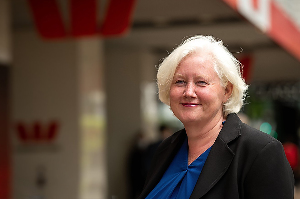“In the past few months the tide has turned towards it becoming a buyers’ market,” said Peter Thompson, Managing Director of Barfoot & Thompson.
“The over-riding market sentiment at present is indecision as to the direction the market is heading.
“A range of factors contributed to market uncertainty at year end. These included non New Zealand residents being restricted from buying certain categories of property, the reported major decline of property prices in the major Australian cities, the potential for capital gains to be applied to investment properties in the future and concerns over world economic stability, in part caused by the trade friction between the United States and China.
“The sales data for December masks that trend but it shows up clearly in the year-on-year figures between 2018 and 2017.
“In December the point was reached where it was vendors that were prepared to meet the market who were achieving a sale while those holding out for their asking price were not.
“Overall, 2018 was a more active year for residential sales than 2017 with sales numbers year-on-year up 8.1 percent.
“However, the median price at $836,792 in 2018 was down 0.8 percent on that for 2017. This is the first time the median price has fallen below that for the previous year since 2008, the year the impact of the Global Financial Crisis affected house prices.
“The average 12-month sales price for 2018 at $929,910 is up on that for 2017, but by only 0.4 percent. Earlier in the year it was tracking between 1 and 2 percent above 2017’s average price.
“A stand out feature for me in 2018’s sales data was the significant increase in the number of sales made in the under $500,000 price category.
“In 2017 property sales in this price category represented 8.9 percent of our sales while in 2018 they had climbed to 11.4 percent of all sales.
“This increase can be linked directly to the higher number of apartments, terraced housing and town houses hitting the market, giving first time buyers and those on limited incomes far better access to property.
“New listings in December at 555 were in line with those last year, and at month end we had 4194 properties on our books, a similar number to those at the same time last year.
“It will ensure that we start the year’s trading with buyers being offered the highest level of choice for seven years.
“Rural and life style properties sales in December were modest. The life style market is price sensitive and active buyer interest was focused on property priced in line with where market sentiment is at present.
“Vendors need to be aware that with the new money laundering legislation that came into force with the start of the new year that in future they will be asked for far more personal information than in the past.”
ASB REACTION
ASB economist Kim Mundy says with total inventory levels continue to rise, that indicates a property market that is increasingly in favour of buyers.
Barfoot and Thompson’s December house price data highlight a very soft end to 2018 for the Auckland housing market. Both seasonally-adjusted new listings and sales contracted over the month. The earlier burst of activity around the time of the ban on foreign buyers appears to have run its course. We are expecting to see more soft data results over 2019. The ban on foreign buyers and tax changes are expected to further dampen demand in a housing market that is now a buyers’ market. However, population growth, low interest rates and the recent easing of Loan-to-Value Ratio (LVR) restrictions are expected to keep a floor under demand in the Auckland housing market. These fundamental supports should flow through to prices and limit the extent to which we see any price falls over the year.
Barfoot and Thompson Auckland house sales fell sharply in December, with the 25% annual fall in sales the first decline since March 2018. Looking back in time, the 504 sales that took place in December was the lowest number for a December since 2008 (when 461 houses sold in Auckland). There had been a jump in sales over October, but the two monthly consecutive declines in sales since then reinforces that October’s lift was likely driven by people trying to get in ahead of the ban. We expect house sales activity to remain subdued as we head into 2019, with the tax changes to losses on rental income coming into effect for the 2019/20 tax year.
New house listings also contracted in December, suggesting that sellers are still taking a cautious approach to the housing market. New house listings have now fallen for three consecutive months.
The sharp fall in sales appears to have more than offset the fall in new listings, resulting in higher total inventory levels over the month. Seasonally-adjusted total listings rose 4.4% mom in December and were 0.8% higher than in December 2017. On an annual basis, total inventory levels have been rising now since June 2016, indicating the gradual shift in the market from a sellers’ market to a buyers’ one.
The rebalancing in the Auckland housing market is expected to continue into 2019, with higher inventory levels giving prospective buyers the luxury of both time and choice. As a result, we expect sales activity to remain muted as we head into a new year. Tax changes and the ban on foreign buyers should also weigh on demand at the margin. However, there do remain a number of solid supports including ongoing population growth, easing LVR restrictions and still-low interest rates. These supports are likely to limit any further price falls we may see in the Auckland housing market over 2019.




Comments
No comments yet.
Sign In to add your comment